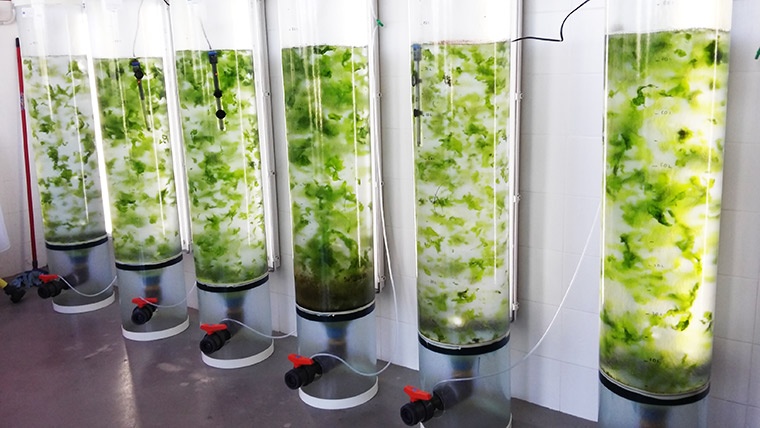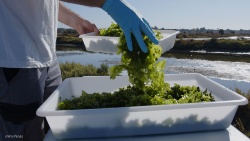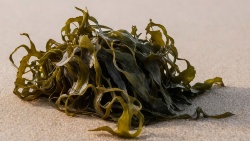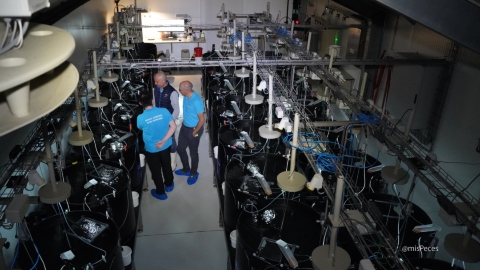 Ulva cultivation | File Photo: misPeces
Ulva cultivation | File Photo: misPeces
A team of researchers from various institutions has developed a groundbreaking method for extracting high-quality proteins from the macroalgae sea lettuce (Ulva fenestrate). This innovative process, which significantly boost protein yield, could be a game-changer in the search for sustainable food sources.
As global demand for protein continues to rise, traditional sources like soy and animal-based proteins face environmental and supply constraints. In this context, seaweed emerges as a sustainable and low-impact alternative. However,existing extraction methods have led to low protein recovery, limiting its potential. This new approach addresses that challenge, providing a highly nutritious, protein-rich ingredient that environmentally friendly.
The study was led researchers from Chalmers University of Technology, the University of Gothenburg, RISE, and Wageninen University. The research was funded by Formas under projects such a ‘CirkAlg’ and ‘A Manual for Use of Sustainable Marine Resources.’
The sea lettuce was cultivated at the Tjärnö Marine Laboratory, part of the University of Gothenburg, Sweden, in indoor tanks under controlled light and temperature conditions.The seawater was enriched with nutrients to enhance the protein content of the biomass.
The extraction and analysis work was carried out at Chalmers University of Technology and RISE, also based in Gothenburg.
João Trigo, co-author of this study, highlighted that the method yields 3.4 times higher efficiency compared to traditional pH-shift techniques. This advancement, he advocates, “significantly enhances the economic viability of seaweed as a protein source.”
With improved yields, he calls for scaling up seaweed production across Europe to capitalize on its potential.
He concludes by encouraging ongoing engagement, as Chalmers University of Technology continues to explore the unique value of these novel protein ingredients and refine the extraction method through advanced research and analysis.
The two-steps process methodology
This technique targets both water-soluble and lipophilic proteins, providing a protein source enriched with essential amino acids and beneficial fatty acids.
The two-step process for extracting proteins from sea lettuce (Ulva fenestrata) begins with a solubilization phase, where the seaweed is treated with Triton X-114. This surfactant disrupts the chloroplast membranes, enabling the release of lipophilic proteins by breaking down membrane structures.
In the second phase, the remaining biomass is subjected to an alkaline extraction using a solution at pH 12, which draws out additional water-soluble proteins.
The proteins solubilized in both steps are then recovered through acidification to pH 2, which causes them to precipitate as a highly nutrient-dense extract. This innovative approach significantly enhances protein yields compared to traditional methods.
This proof-of-concept study marks a significant step toward meeting the global demand for sustainable protein sources. The researchers aim to refine the method further by exploring food-grade alternatives to Triton X-114 and testing the technique on other types of seaweed and photosynthetic biomasses.




